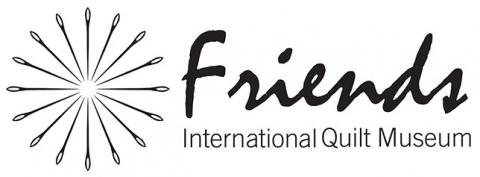Medallion Quilt
Medallion Quilt
Circa 1720-1750
Probably made in Norway or Sweden
82 x 90 inches (229 x 208 centimeters)
Gift of the Robert and Ardis James Foundation
2015.052.0001
Exquisite workmanship, a vibrant palette, and unusual techniques and textiles combine to dazzle in this rare Scandinavian quilt. The polychrome flowers, leaves, and scallop shells are densely worked in long-and-short stitches, stem stitches, and French knots, while laid filling stitches create a textural effect in the white flowers on the blue silk taffeta border. A chevron pattern stands out against the densely stitched quilting. The sophisticated needlework suggests the piece was made in a professional workshop.
Chinese “slips” (pre-embroidered designs, which have been appliquéd to the quilt) hold long-tailed birds perched on flowering branches and dragons on delicate sprigs. The inclusion of these slips attests to the flourishing maritime trade between Sweden and China in the eighteenth century. The Swedish East India Company (1731-1813) established commercial ties with Chinese merchants from whom they purchased tea, porcelain, spices, and silk—commodities that were in great demand in the West. In addition, the elaborately ornamental or rococo aesthetic makes evident the strong ties between the Scandinavian aristocratic and merchant classes and their other European counterparts. In this era, predominant decorative styles crossed national borders and waterways with ease.
This quilt appears in Old World Quilts, on display at the International Quilt Museum September 6, 2019 - July 12, 2020. It shares a number of common elements with others on display in Old World Quilts. It features a central medallion—a dominant textile design of the 16th, 17th, and 18th centuries drived from Persian, Indian, and Chinese carpets—and embroidery. The quilt also features false or flat quilting. This is a decorative embroidery technique that uses a backstitch to mimic quilting. It results in an unbroken line of stitching, which often tricks viewers into thinking it might have been machine quilted. This video demonstrates the difference between false or flat quilting and the commonly used running stitch.
















